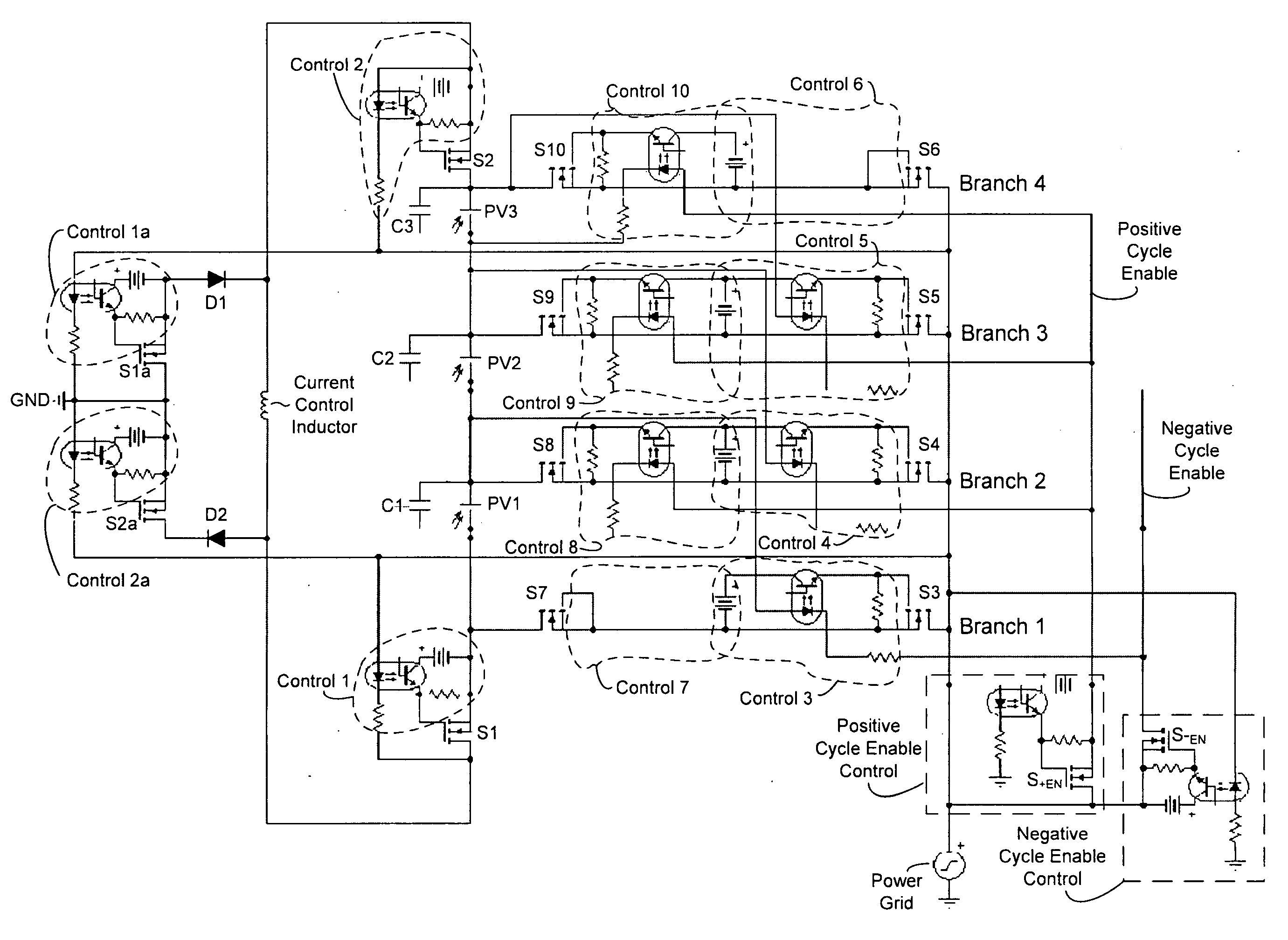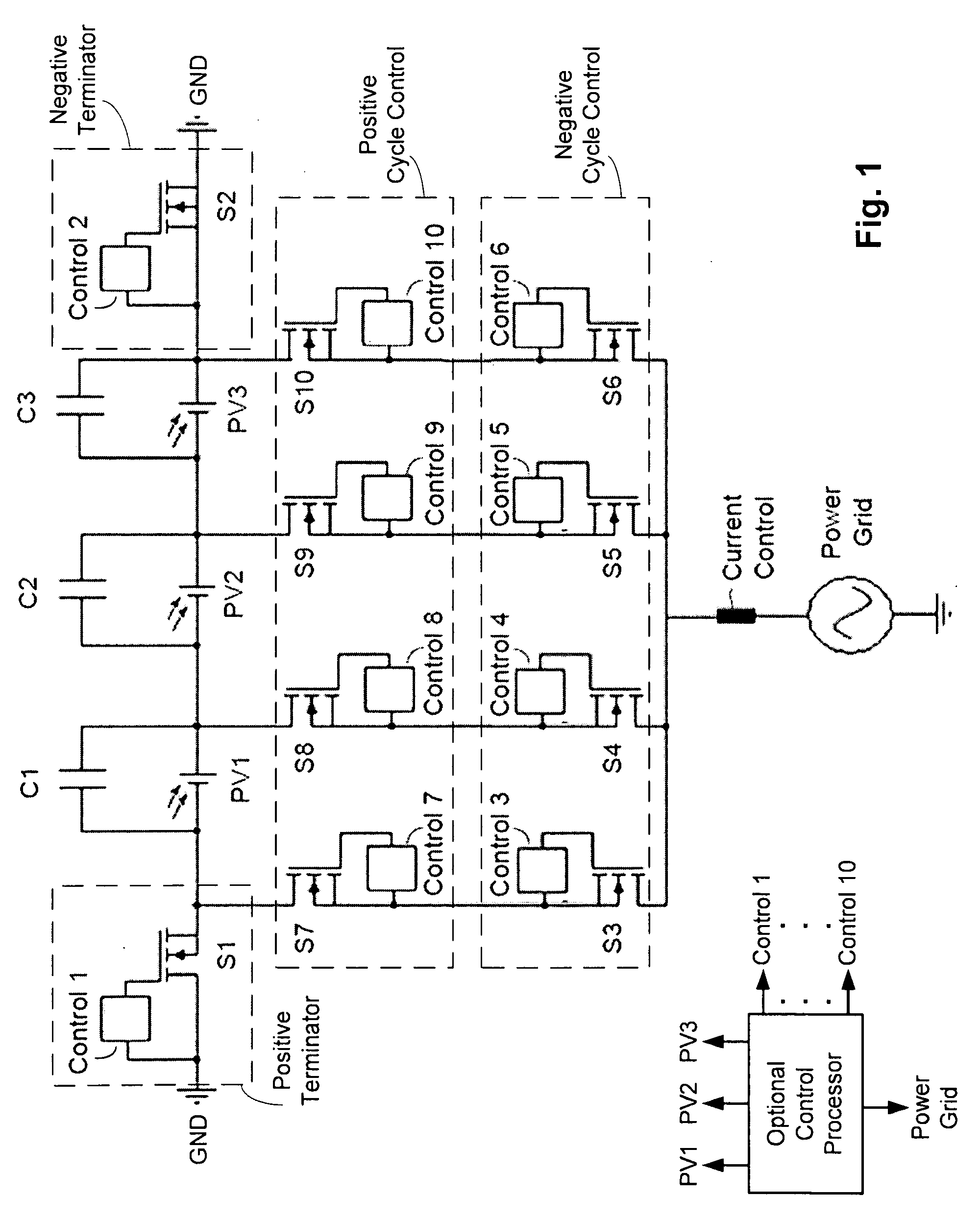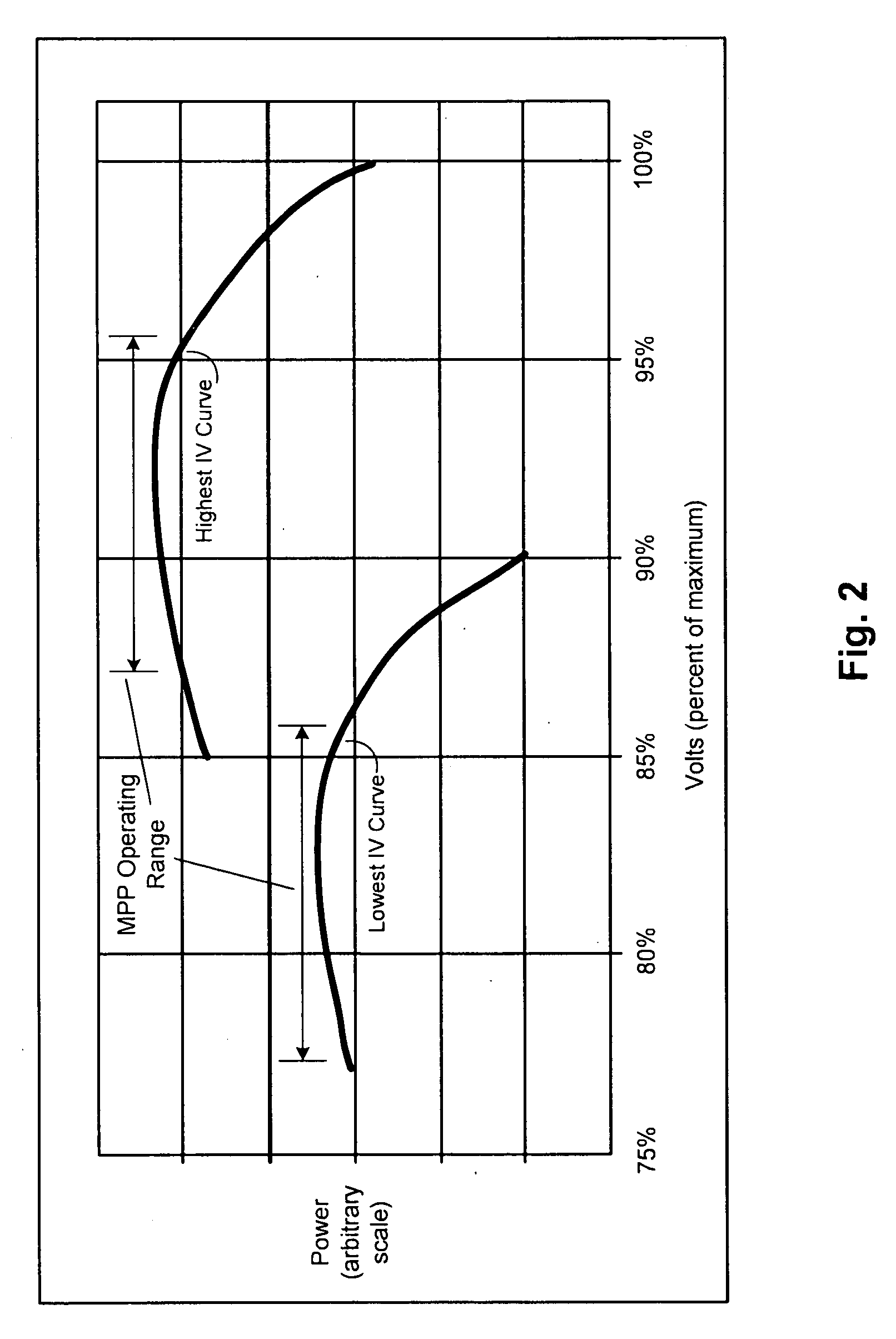Photovoltaic ladder inverter
a photovoltaic ladder and inverter technology, applied in the direction of dc-ac conversion without reversal, dc-ac circuit constant-current supply, transportation and packaging, etc., can solve the problem of uninterruptible power supply, conventional dc-to-ac inverter design, and high-speed switching process may generate undesired harmonic frequencies
- Summary
- Abstract
- Description
- Claims
- Application Information
AI Technical Summary
Benefits of technology
Problems solved by technology
Method used
Image
Examples
Embodiment Construction
[0017]Techniques are disclosed that allow for efficient DC-to-AC conversion. The techniques may be implemented, for example, in a DC-to-AC inverter device that is relatively less expensive, includes significantly fewer components, and / or reduces or otherwise eliminates harmonics, relative to conventional DC-to-AC inverter designs. The techniques may be employed in any number of applications, such as in a system for converting discrete a DC source from a plurality of batteries or photovoltaic cells (or other suitable DC source) into a relatively smooth AC voltage output that may be used by AC devices and / or provided to an electric power grid. The system may be further configured to vary the output voltage from the inversion process to, for instance, ensure adequate voltage for the target application, or to allow for optimizing the output of a photovoltaic array to ensure maximum power point tracking.
[0018]Photovoltaic Ladder
[0019]FIG. 1 illustrates a circuit diagram of a solar invert...
PUM
 Login to View More
Login to View More Abstract
Description
Claims
Application Information
 Login to View More
Login to View More - R&D
- Intellectual Property
- Life Sciences
- Materials
- Tech Scout
- Unparalleled Data Quality
- Higher Quality Content
- 60% Fewer Hallucinations
Browse by: Latest US Patents, China's latest patents, Technical Efficacy Thesaurus, Application Domain, Technology Topic, Popular Technical Reports.
© 2025 PatSnap. All rights reserved.Legal|Privacy policy|Modern Slavery Act Transparency Statement|Sitemap|About US| Contact US: help@patsnap.com



